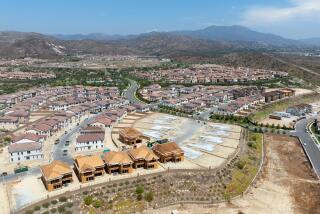Motorola Plans to Sell Irvine Chip Facility
- Share via
IRVINE — Motorola Corp. said Thursday it plans to sell the Irvine semiconductor plant that it bought for $111 million in 1994 from Western Digital Corp.
The plant, one of the largest manufacturing facilities in the Irvine Spectrum industrial park, has about 500 employees, a Motorola spokesman said. The company would offer employees positions at its other facilities if a new owner didn’t want to retain all of the workers.
Motorola, apparently recognizing that a buyer might be hard to find, also sweetened the pot by saying Thursday that it would like to keep buying the plant’s products.
The Illinois-based electronics giant said it is accepting bids from interested purchasers, but officials would not say what they hope to get for the 224,000-square-foot facility, built in the late 1980s.
Industry analyst Mario Morales, at International Data Corp. in Northern California, said the number of potential buyers is probably limited because the plant isn’t equipped to make the kind of high-density silicon wafers that manufacturers of advanced electronics equipment want.
The two likeliest local buyers--Western Digital and Rockwell International Corp.--said Thursday that they aren’t interested.
Western Digital is not in the market for a semiconductor plant, chief financial officer Duston Williams said, even one almost next door to its Irvine headquarters.
Costa Mesa-based Rockwell International makes products that can use the older generation chips the Motorola facility is best equipped to fabricate. But the company still hasn’t brought its new chip-making plant in Colorado up to capacity, a spokesman said, and isn’t likely to be in the market for another one until that happens.
Motorola said it has retained the Silicon Valley office of Merrill Lynch to help market the facility.
The company is selling the Irvine plant, said spokesman Dan Rogers, because it is too small and too isolated from Motorola Semiconductor Products Sector’s chip-making facilities in Texas, Arizona and Virginia.
“It is a stand-alone plant with no expansion room,” he said. “Our other facilities are manufacturing campuses” where several related production operations are centralized. “And they all have lots of expansion room.”






